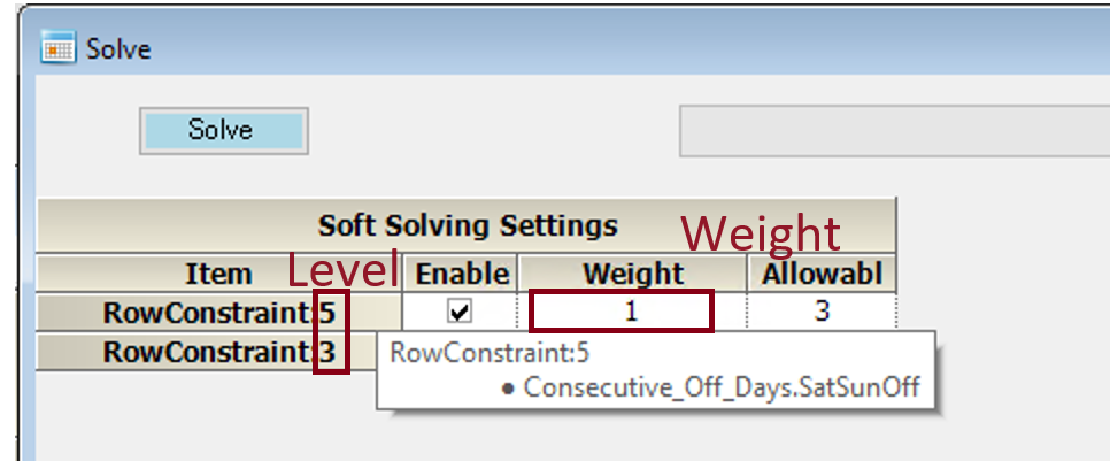Is there any impact changing the integer value of it ? I understand the “soft level” principle but the weight…
Sure, I can definitely help you with that!
In the Solve tab, the “weight” refers to the importance or priority given to a particular constraint.
When solving a linear system, the objective function value
(UB) is calculated as the sum of all weights multiplied by their respective errors. The solver then tries to minimize the value of UB by finding the optimal shift assignments.
The magnitude of the weight corresponds to its priority - the larger the weight, the higher the priority.
However, a level is just an index that summarizes the weights.
For instance, level 7 is marked as a serious error with red, while others are marked yellow.
But, there is no relationship between levels and weights. It is also fine if level 7 is weighted 1 and level 1 is weighted 10.
It is only the weights that are passed to the solver.
The advantage of this system for scheduling is that the weights of desired constraints can be changed immediately to seek solutions. As you know, the nurse scheduling problem is not known what the error looks like at the time until it is solved.
Depending on the state of the error at the time, the priority can be changed immediately at hand.
For more information on the relationship between levels and weights, please read the following section
https://www.nurse-scheduling-software.com/manuals/shift_manuals/chapter19/
You should see “UB=…” in the right pane in the fig.

